Rune Factory Frontier (Wii) Review
By Joshua Callum Jeffery  25.08.2010
25.08.2010
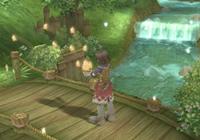
It took a while, with the Japanese release date in November 2008 and the US release in March last year, but the Wii instalment to the new Harvest Moon spin off series, Rune Factory, finally hit Europe in April. How does Rune Factory: Frontier stand up as an RPG? Read on and all will be answered…
Unlike other games in the Rune Factory franchise, Frontier is a direct sequel to the first Rune Factory game, featuring many of the same characters, including the main protagonist Raguna, and his cute, bubbly and slightly insane love interest Mist. Prior to Frontier’s opening, Mist randomly runs off and goes missing, so Raguna goes to look for her while the rest of his village twiddle their thumbs. Raguna winds up staying in the church of a nearby village, and is greeted the next morning by none other than Mist. It turns out Mist left her village of birth without telling anyone because, as a well-adjusted being, she was following voices in her head. A few minutes later and Raguna has been forced to live on the farm next door to her in this new village, just like in the first Rune Factory game. Once the old village hears about Raguna and Mist’s safety, a bunch of familiar faces also join this new village. While not all the old characters return, you have a fair few oldies alongside the new cast.
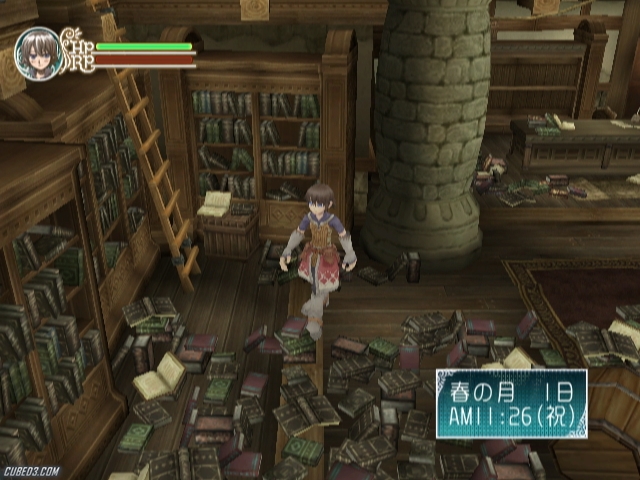
So about those voices in Mist’s head. There’s a huge island shaped like a whale floating in the sky above the village, appropriately called Whale Island. The story goes that something is taking its power, and that it will fall and crush the village if this isn’t stopped. The island, as well as the village and surrounding areas, are fuelled by little creatures called Runeys, which are like the living souls of nature. There are Runeys for rock, water, trees and grass, and Raguna can also use these to make wishes for certain events to occur each day. The plot is very slow, but decent enough for what is essentially an RPG-fleshed out farm simulator. The main problem is that it’s very hard to discover what your next objective is, and you’ll spend months of the game just working on your farm without any indication of where the plot is headed. However, during important events such as the introduction of crucial townsfolk, and plot development, you’ll be rewarded with some very high quality animé cutscenes, accompanied with good quality voice acting. On that note, unlike the DS Rune Factory games, Frontier is quite heavily voiced, with some NPC dialogue being fully voiced. Unfortunately it’s a little erratic at times, with instances of voiced dialogue being followed by text and silence.
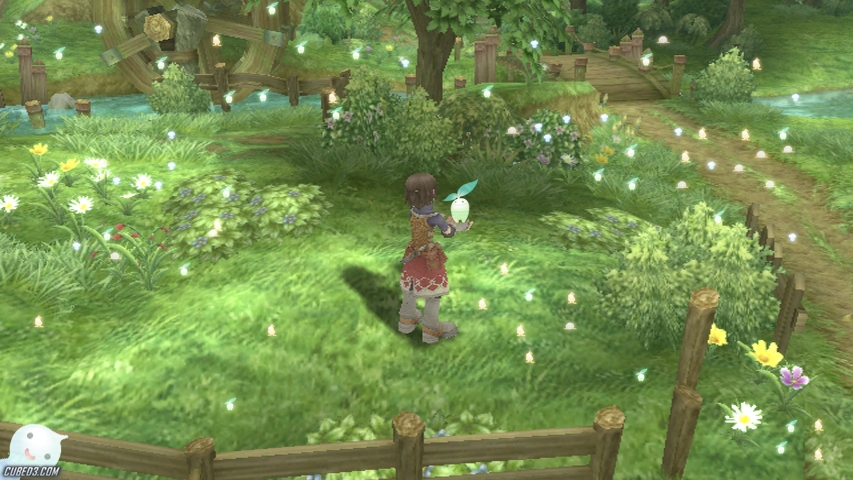
While Raguna figures out how to stop the Runeys from disappearing and save the world, he has to work his butt off to make a living for himself, which means farming, fishing, ranching - all the usual Harvest Moon elements we know and love. Series veterans will feel right at home with this element, cleaning your field, buying crops and watering them depending on which season you’re in works simply enough, but as always it can be seen as a tedious and repetitive process. Of course it wouldn’t be Harvest Moon without a large portion of the game focused on wooing and romancing with the village girls. There are twelve bachelorettes to choose from this time, including Mist, an elf, a witch, a nun, a tomboy shopkeeper, and a vampire, amongst others. Once you fulfil certain requirements, Raguna can get married to one of these lovely ladies and have a child, but this will take players a very long time to do.
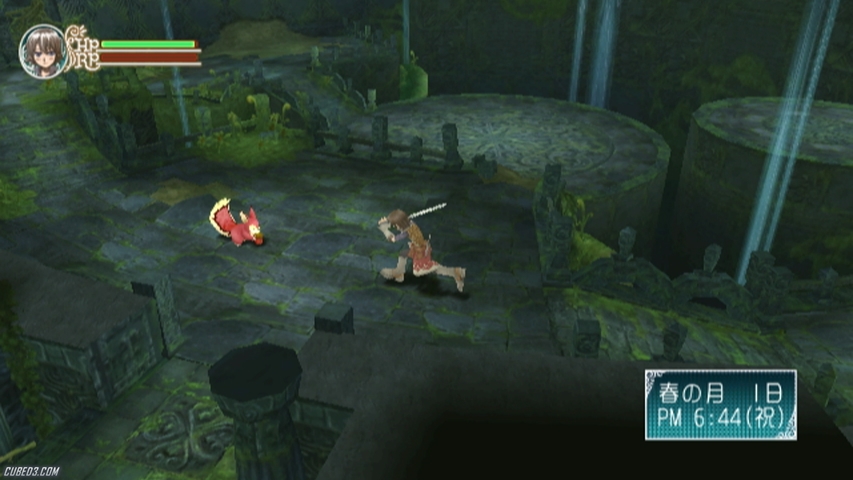
Unlike Harvest Moon however, Rune Factory has a much stronger fantasy element, and you’ll be forging weapons and battling through dungeons of monsters on a regular basis. To begin with you buy weapons from the local blacksmith, but a little later you can buy tools for your house that let you forge much better weapons. Attacking is very simple, you use the attack button for a simple combo, and depending on your weapon you can hold another button while attacking to use a special, much more powerful, attack. The dungeon crawling and battle mechanics are decent, but very standard and definitely wouldn’t stand up well in a game of their own, so thankfully they only play about half the part in Rune Factory Frontier. You also have another powerful tool in your arsenal, one that isn’t a sword, lance or axe. Your trusty animal brush can tame wild monsters seen roaming dungeons, and after you’ve built a barn on your farm you can ranch these monsters. Take nice care of them and they’ll reward you by letting you harvest things like milk, wool, and eggs from them. Some monsters will even let you mount them, and others will assist you with your crops and farm work. What’s more, whichever animal you choose to travel with for the day will fight alongside you in dungeons.
As with any Harvest Moon or Rune Factory title, getting through these things takes a lot of time. Don’t expect to make any real progress in the plot or your bachelorette’s heart until around the end of the first year. Those of you familiar with the franchise can probably make decent headway fairly quickly, but you’ll still need to put a lot of time in for Frontier to be rewarding.
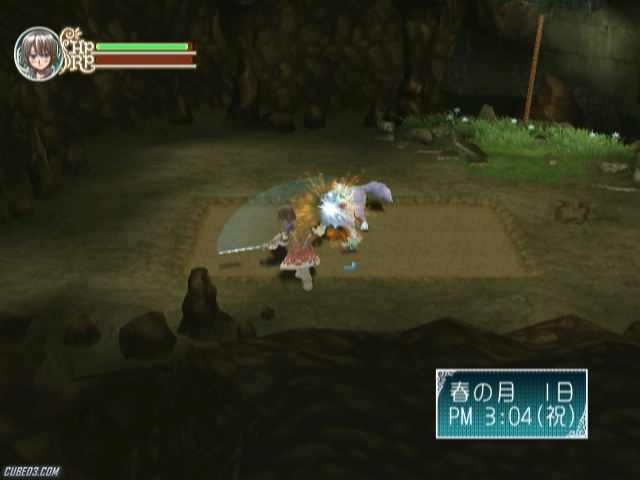
Cubed3 Rating
Great - Silver Award

For Harvest Moon and Rune Factory fans, Frontier proves to be one of the best titles console titles in years, with pretty visuals, decent voice acting and as usual plenty of things to do. While the usual glitches are present, nothing in the game is considerably badly done. On the other hand nothing about it is considerably fantastic, and the slow pace might not be enough to hold the attention span of some.

![]() 8/10
8/10
![]() 10/10
(2 Votes)
10/10
(2 Votes)
 Out now
Out now  Out now
Out now  Out now
Out now  Out now
Out now Comments
Comments are currently disabled

 Sign In
Sign In Game Details
Game Details Subscribe to this topic
Subscribe to this topic Features
Features






 Top
Top

